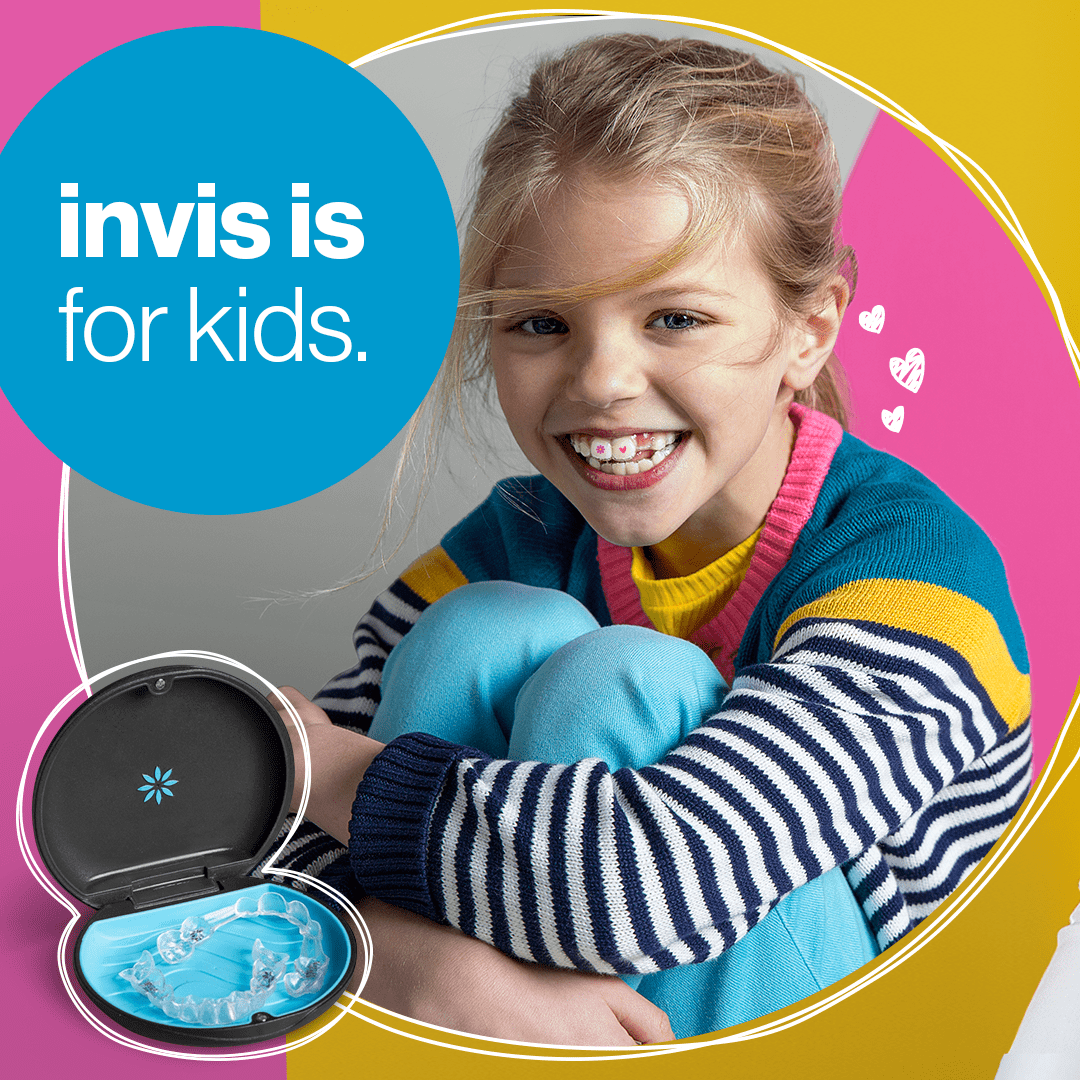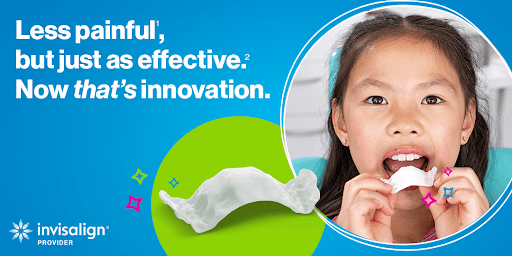As a parent, you want what’s best for your child, which sometimes means taking action to prevent future medical issues.
In orthodontics, early treatment involves taking steps to prevent the development of significant jaw alignment issues, like posterior crossbites, open bites, and mild to moderate malocclusions.
If you’re concerned about potential future orthodontic issues or want to know when the best time to have your child’s bite analyzed is, you’re in the right place. We’ll answer those questions and more in this post!
When Should You Consider Early Orthodontic Treatment?
Orthodontics might not be at the top of your mind when considering your child’s early development.
When it comes to orthodontic procedures — like braces — most wait until adult teeth grow in. However, when it comes to bite alignment or early skeletal discrepancies, early detection and treatment while your child’s bones develop is better than waiting until adulthood.
If you notice that your child’s teeth don’t align quite right while eating or if your pediatrician notices a possible orthodontic condition, it’s vital to contact a trusted orthodontist near you.
The American Association of Orthodontics also suggests that children should meet with an orthodontist by age seven, even if there are no apparent bite issues.
These early appointments will help your orthodontist identify any issues that may go undetected by regular pediatric checkups and provide insights for potential future treatments for tooth alignment.
What to Expect from Early Orthodontic Appointments
Scheduling early childhood orthodontist appointments may cause you some anxiety, but we’re here to assure you that everything will be fine — especially with our team of friendly and supportive orthodontic experts.
The first appointment with an orthodontist will always be a checkup to establish baseline orthodontic health. This visit will most likely include:
- A physical examination of your child’s teeth and bite
- Digital scan to analyze alignment
- Digital photos so that we can co-diagnose and describe what we see
- 3D radiograph to determine the amount of growth and evaluate the development of adult teeth
These treatments give your orthodontist the information they need to determine if your child will need no, potential, or immediate orthodontic treatment.
Is Early Orthodontic Treatment Necessary?
Every early orthodontics appointment won’t result in treatment, but there may be times when treatment is necessary.
Many early treatments recommended by orthodontists prevent your child from needing significant therapies — or even oral surgeries — later in life.
For example, if your child already has some adult teeth and your orthodontist notices signs of overcrowding, they can recommend braces early on to prevent potential misalignment or impacted teeth. Something we like to describe as arch development!
At Orthobar, we offer young children an Invisalign First option for early treatment! We refer to this as interceptive or Phase I treatment.
What Causes the Need for Early Orthodontic Treatment?
Children may inherit orthodontic issues, or the problems may stem from accidents, disease, or early childhood habits. We often see the following issues during early orthodontic appointments:
- Crossbites
- Underbites
- Crowded teeth
- Missing or excessive teeth
- Teeth that don’t meet
After analyzing your child’s bite patterns, your orthodontist will build an action plan to help your child offset future complications and develop a beautiful smile!
What Types of Treatment Are Common in Early Orthodontics?
Your orthodontist may recommend various early interceptive orthodontic treatments after the initial appointment.
As we mentioned earlier, many early treatments help with bite alignment and overcrowding to prevent future issues. A rapid palate expander is one of our most common treatments for bite alignment. Another option is the Invisalign Palatal Expander System.
These orthopedic (orthodontic) devices help widen and expand the upper jaw to create more space for the upper teeth. After the expansion phase with a rapid palatal expander, a short stint of limited braces helps align the current adult teeth and continue to focus on arch development.
The difference in the Invisalign Palatal Expander System is that the appliance is removable, and each tray is changed every night. After the expansion phase, we can move into aligners or braces to aid in more arch development and front tooth alignment.
Will My Child Need Early Corrective Orthodontics?
Not necessarily! Many children who visit our office for their first orthodontic consultation don’t need bite correction.
Our orthodontists will always be honest with you about the need for potential interventions. If that means your child doesn’t need early interceptive orthodontic treatments, we’ll let you know. If no treatment is required or necessary, we will set your child on a 6-month recall to make sure we are monitoring your child’s growth and development and to intervene if we see anything that begins to move, of course!
Your child may also need braces after their adult teeth grow in, and through our six months of monitoring growth and development, we can determine a proper time to start!
Trust Orthobar With Your Child’s Early Orthodontic Treatment
At Orthobar, we believe everyone deserves a bright smile and a bright future. Our orthodontists pride themselves on providing honest care and the best treatments possible for all of our pediatric patients.
We have convenient payment plans and work with your insurance company to ensure your child receives the best treatment at an affordable cost.
If you live in the greater Las Vegas area and have questions about your child’s first orthodontic appointment, contact us today. Our team will happily guide you through the process and help you know what to expect at your child’s first appointment.
 Free Consult
Free Consult


